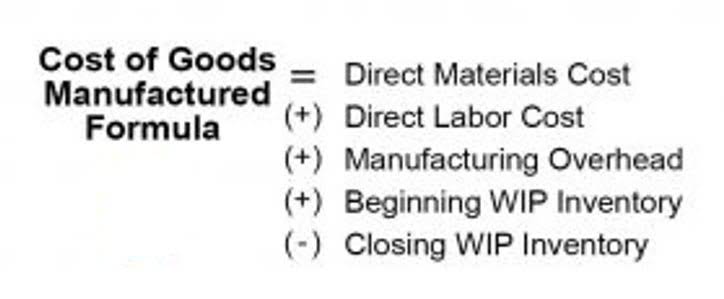
This requires an adjusting entry at the end of each accounting period to reflect the amount of the expense that has been incurred. When a company pays for an expense in advance, the initial journal entry involves a debit to a prepaid expense asset account and a credit to the cash account. This reflects the Partnership Accounting outflow of cash and the creation of an asset representing the future benefit.

Adjusting entries for prepaid expense
- The contra asset account which accumulates the amount of Depreciation Expense taken on Equipment since the equipment was acquired.
- A prepaid expense by definition is an expense that has been paid for by the business in advance, that is, before the services for that expense have been availed.
- Adjusting entries are accounting journal entries that are to be made at the end of an accounting period.
- The net of the asset and its related contra asset account is referred to as the asset’s book value or carrying value.
- Because this $3,000 was earned in December, it must be entered and reported on the financial statements for December.
This will be discussed later when we prepare adjusting journal entries. Using the concept of the journal entry for prepaid expenses below is the journal entry for this transaction in the books of Company-B at the end of December. Another important concept in adjusting entries is depreciation, which involves allocating the cost of a long-term asset over its useful life. For example, if a company purchases a machine expected to last ten years, the cost of that machine is spread out over its useful life rather than being expensed all at once. This method provides a more accurate representation of the asset’s contribution to revenue over time. The expense would show up on the income statement while the decrease in prepaid rent of $10,000 would reduce the assets on the balance sheet by $10,000.
- A review of the details confirms that this account’s balance of $1,200 is accurate as far as the payrolls that have been processed.
- So, buckle up, because we’re about to dive into the nitty-gritty of prepaid insurance journal entries with some down-to-earth examples.
- Here are the Equipment, Accumulated Depreciation, and Depreciation Expense account ledgers AFTER the adjusting entry above has been posted.
- Once the journal entry for prepaid expenses has been posted they are then arranged appropriately in the final accounts.
- Also referred to as a “p.o.” A multi-copy form prepared by the company that is ordering goods.
Prepaid expenses journal entry
Adjusting entries for prepaid insurance are crucial because they ensure your financial records reflect reality. In this guide, we’ll dive into the nitty-gritty of adjusting entries for prepaid insurance. We’ll keep it real, toss in a dash of adjusting entries for prepaid insurance humor, and by the end, you’ll understand why these adjustments are essential for your financial statements—not just some accounting mumbo jumbo. In this journal entry, the company records the prepaid insurance as an asset since it is an advance payment which the company has not incurred the expense yet. The company can record the prepaid insurance with the journal entry of debiting the prepaid insurance account and crediting the cash account.

Adjustments for prepaid expenses
When a specific account is identified as uncollectible, the Allowance for Doubtful Accounts should be debited and Accounts Receivable should be credited. The 500 year-old accounting system where every transaction is recorded into at least two accounts. Examples of outstanding expenses include salaries earned by employees but not yet paid, utility costs incurred but not yet billed, or interest on a loan that has accrued but not yet been paid.
Example of Adjusting Prepaid Expenses

After 12 full months, at the end of May in the year after the rent was initially purchased, all of the prepaid rent will have expired. If the company would like to continue to occupy the rental property, it will have to prepay again. The same adjusting entry above will be made at the end of the month for 12 months to bring the Prepaid Rent amount down by $1,000 each month.
- An expense is a cost of doing business, and it cost $100 in business license taxes this month to run the business.
- If the loan specifies an annual interest rate of 6%, the loan will cost the company interest of $300 per year or $25 per month.
- The amount in the Insurance Expense account should report the amount of insurance expense expiring during the period indicated in the heading of the income statement.
- Either method for recording prepaid expenses could be used as long as the asset account balance is equal to the unexpired or unused cost as of each balance sheet date.
- As you can see there is a heavy focus on financial modeling, finance, Excel, business valuation, budgeting/forecasting, PowerPoint presentations, accounting and business strategy.
Prepaid Rent – Deferred Expense

If you DON’T “catch up” and adjust for the amount you used, you will show on your balance sheet that you have $1,000 worth of supplies at the end of the month when you actually have only $900 remaining. In addition, on your income statement you will show that you did not use ANY supplies to run the business during the month, when in fact you used $100 worth. Before we get too carried away https://letsmove.ro/listen-to-this-interview-before-you-outsource-5/ with adjustments, let’s revisit the initial journal entry when you first pay for the insurance. In the business, the company usually needs to make an advance payment for the insurance that it has purchases. In this case, it is important for the company to record the payment as prepaid insurance.
